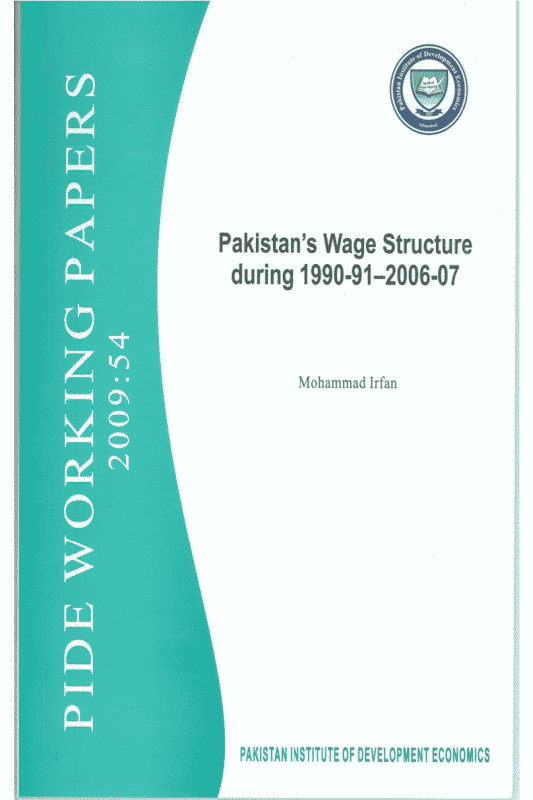
Pakistan Institute of Development Economics
- Home
Our Portals
MenuMenuMenuMenuMenuMenuMenu - ResearchMenuMenuMenuMenuMenuMenuMenu
- Discourse
- The PDR
- Our Researchers
- Academics
- Degree Verification
- Thesis Portal
- Our Portals
Pakistan’s Wage Structure, during 1990-91–2006-07
This paper attempts to document changes in the wage levels of different categories of workers employed in various segments of the labour market during the period 1990-91–2006-07, according to the information given in the labour force surveys. Wage structure can be analysed from different angles. Here we look at the levels and trends in the broad categories of industry. Further subdivided along the demarcation of formal/informal, and by worker characteristics such as age, sex, education, and occupational categories. Largescale Manufacturing Industries, Banking Sector, and Civil Servants’ salary structure are subjected to investigation for disuring wage trends in the formal sector. The impact of unionism and of the labour and wage policies of various regimes and upon wage outcome is also assessed. There appears to be a consonance between money wage growth at the aggregate level of the economy and GDP growth. The former registered a positive growth, with the exception of the 1999-2002 period, when the latter had low growth. Time trend of average wage works out to 7.6 percent, which, adjusted for inflation, yields a 0.7 percent trend growth rate in real wages for the 1990-07 period. Real wage growth rate at the aggregative level is characterised by substantial diversity. One finds an inverse relationship between the level of wage rate and real wage growth. Thus workers in the informal sector and commodity producing sectors like Agriculture and Manufacturing suffered a real wage decline during the period under study.



